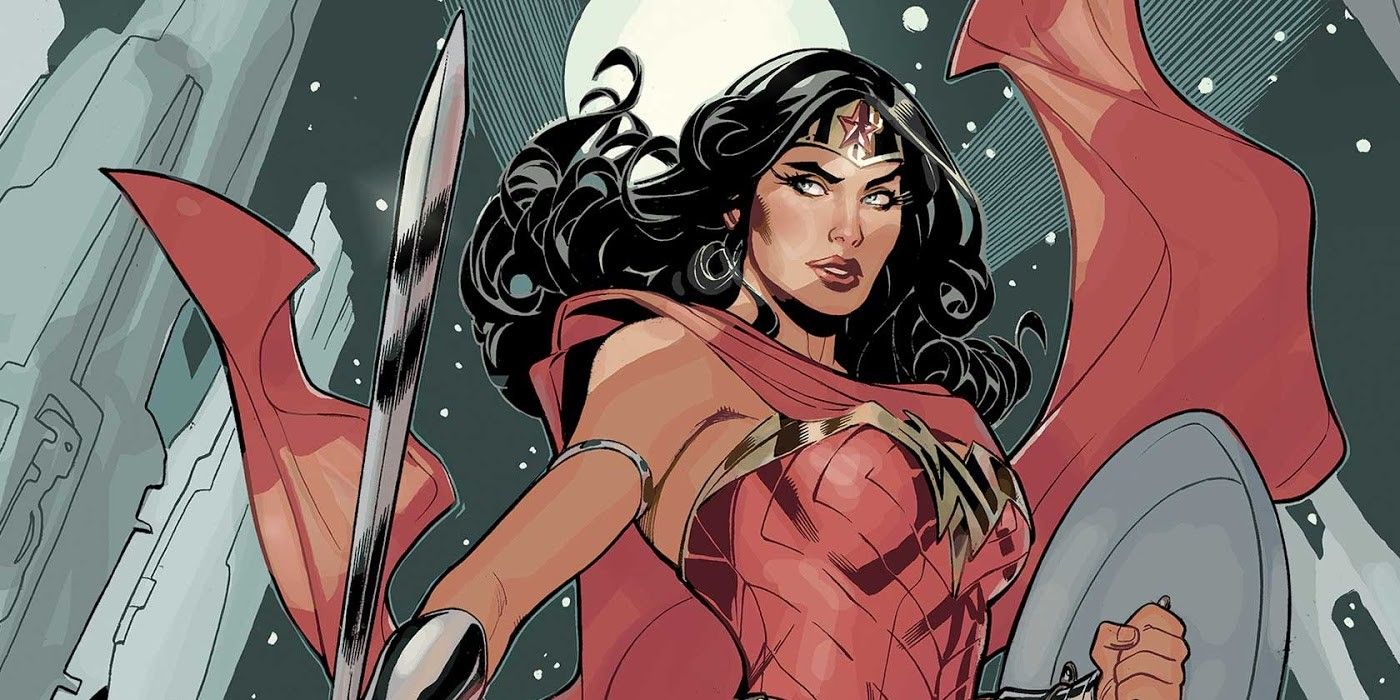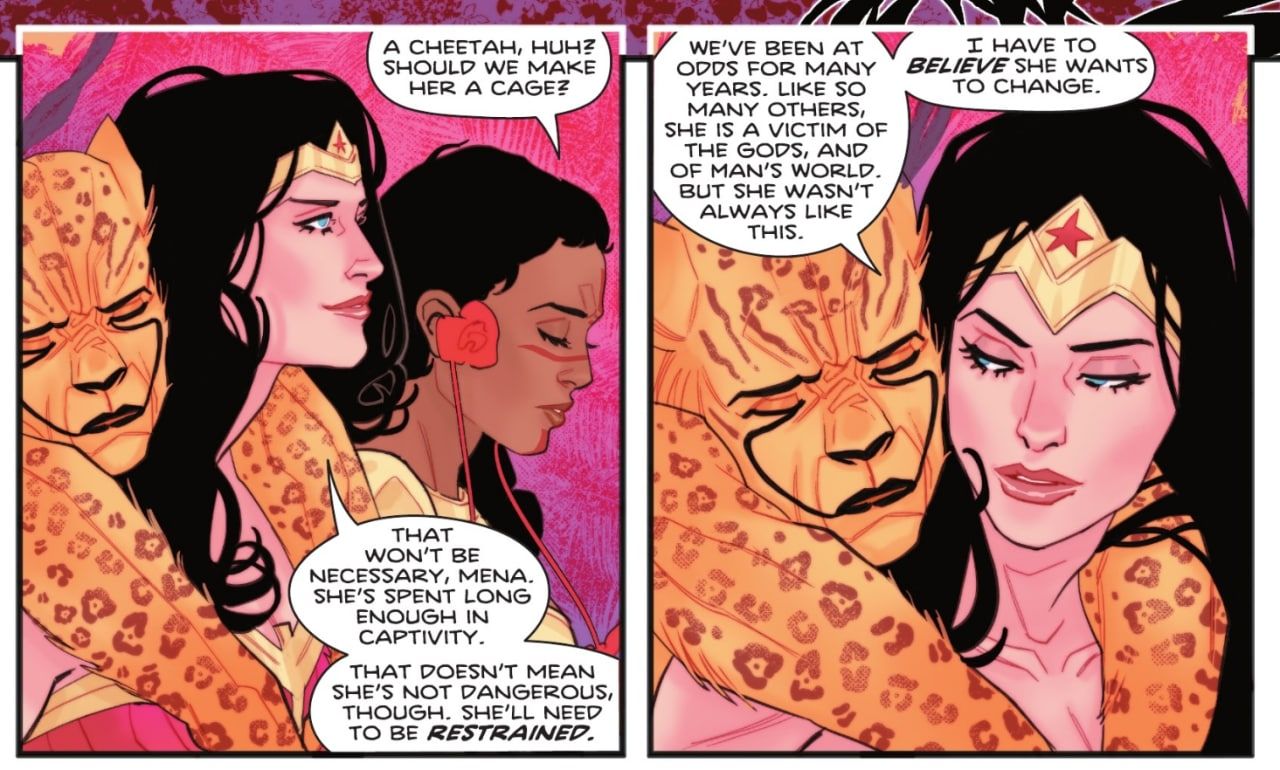Warning: spoilers for Wonder Woman #792 are ahead! Wonder Woman's Golden Age of comics was filled with high-flying adventures headlined by one of the first female superheroes at DC. She was already set apart from Batman and Superman due to her gender, but she also developed her own way to deal with villains. In her newest arc in Wonder Woman, she returns to her roots and shows just how unique she is when taking down villains.
While DC's trinity of Batman, Superman, and Wonder Woman all have a "no kill" policy, Superman and Batman go about their days onceir the villains are captured and taken to jail. Wonder Woman, however, became the golden standard for heroes everywhere and the leading lady for the feminist movement in comics. Her villains got a shot at redemption once she defeated them, especially the women she fights, as she believes they all deserve a second chance.
Wonder Woman's most notable enemy is the villain Cheetah, who has become her nemesis over time. They have battled each other over the years, with Diana coming out on top most of the time, but not without Cheetah striking her down in some way. However, this new arc in the recent Wonder Woman #792 by Becky Cloonan, Michael W. Conrad, Paulina Ganucheau, Marguerite Sauvage, and Jordie Bellaire shows Diana finally working together with her nemesis. When Minerva goes feral, Wonder Woman works to help her regain her consciousness and her mind, pushing the villain to overcome the hateful nature instilled in her by instinct. Despite their long, hateful history, the two of them have learned to care for one another. Bringing Minerva back from the dangerous edge of losing herself to animalistic nature was the first step to helping Cheetah to a better path.
Cheetah Helps Wonder Woman Restore Her Golden Age Roots
It all ties together when Cheetah regains her mind and finally decides to help Diana in her next challenge, thus pushing herself to actually take that first step towards redemption with Diana. Redemption doesn't come easy and Wonder Woman understands that it takes more than just a riveting speech to change a villain's ways, which is why she chooses to help rehabilitate her. It all comes full circle to Diana's Golden Age where she would lead her villains to an island -- titled Reform Island -- specifically designed to rehabilitate them and give them a better shot at life. This concept was first introduced in Wonder Woman #4 by William Moulton Marston, Harry G. Peter, and Sheldon Mayer. It was the perfect way to set her apart from the other heroes, and shows her compassion for those who suffer, the direct parallel to her talk with Cheetah that helps her understand Minerva's pain.
Wonder Woman's belief in her villains shows that she is among the most compassionate of DC's trinity of heroes. Despite her status as a demi-goddess, she is not above helping anyone overcome their struggles. While she didn't grow up in Man's World, she realizes that women have it tough in the foreign land she protects, and especially focuses her rehabilitation on the women who've suffered. Minerva was a victim to a society ruled by men and her pain made her grow bitter towards Diana.
While many comic storylines have forgotten all about the way Wonder Woman treats her villains, DC's Infinite Frontier era is helping her find her roots again. Wonder Woman's story is important to tell, and her compassion shows audiences a new side to the world of heroes that deals with the pain and loss that a lot of her rogue's gallery faces. Wonder Woman's Golden Age was absolutely pivotal in changing the way DC's audiences saw female characters, and showed a creative and sympathetic new way for heroes to treat their villains.
Wonder Woman #792 is available now from DC Comics


